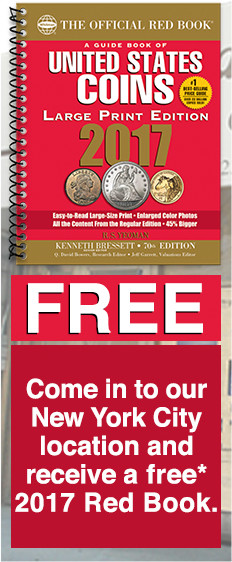Value of Indian Gold Half Eagle (1908-1929)

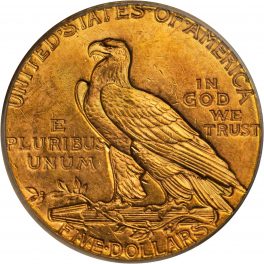
The Indian gold half eagle $5 gold coin, along with the quarter eagle of the same design type, represents a revolutionary time in American numismatics. The design resulted from a fusion of great political and artistic minds, and reflected a passion for and dedication to our nation’s coinage that we may never see again.
President Theodore Roosevelt’s numismatic crusade for more artistic coinage allowed for an unrestrained incubation of concepts, fostered by his relationship with famed sculptor Augustus Saint-Gaudens. In 1905 the president commissioned the artist to redesign the entirety of American coinage from the cent to the double eagle. Work began on the $20 and then the $10. Saint-Gaudens was ill with cancer, however, the artist finally succumbing to that terrible disease on August 3, 1907. The work on the eagle and double eagle was completed by his assistant, Henry Hering. Eagles were first struck in the autumn and double eagles in December of 1907. This left undone Roosevelt’s hope for the other denominations. Seeking to at least, for the time being, get work on the other two gold denominations underway, it was necessary to tap the talents of another sculptor.
The artist chosen was a pupil of Saint-Gaudens, Bela Lyon Pratt, who in due course designed the motifs for Indian quarter eagle and half eagle. Perhaps even more iconic than Pratt’s design is the sunken relief format in which it is executed, often incorrectly referred to as “incuse” by numismatists. Probably, recessed design would be a more appropriate term. This novel technique was proposed by Boston physician, Dr. William Sturgis Bigelow, who was a close friend of Roosevelt’s and an active patron of the growing art community in Boston, where Pratt was an instructor at the School of the Museum of Fine Arts.
Bela Lyon Pratt is lauded for his photorealistic sculptures and sketches in various works. His Native American motif on the half eagle of 1908 to 1929 is of a male with a feathered headdress, true to life, and actually a portrait of Sioux Indian Chief Hollow Horn Bear. The word LIBERTY is above and the date is below, with Pratt’s initials BLP are visible in small letters just below the portrait. Stars at the border surround the central figure, divided six at left and seven at right, representing the 13 original colonies. The reverse design features an intricately feathered bald eagle striding left atop a bundle of arrows. The legend UNITED STATES OF AMERICA is above and the denomination FIVE DOLLARS is at the lower border. The lower left and upper right fields are inscribed with the mottoes E PLURIBUS UNUM and IN GOD WE TRUST, respectively. The eagle portrayed here was heavily influenced by the eagle used on the reverse of the Indian $10 coin designed by Saint-Gaudens, reproduced at the request of President Roosevelt himself. A similar representation of the national bird was used by Saint-Gaudens on the reverse of the president’s inaugural medal of 1905.
Our guide has information about all five dollar Indian gold coins. The classically rare dates are the 1909-O and 1929 half eagles. Those two coins are always in demand. Any coin in MS-65 condition or better should be considered rare and valuable. Of course all of these coins have nearly a quarter ounce of gold in them. The majority of $5 Indian Head coins will definitely be worth more than just their gold value though. Please contact us if you need an offer or advice on your coin. Info@Coinappraiser.com
-
1908 Indian Gold Half Eagle Value
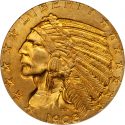
-
1908-D Indian Gold Half Eagle Value
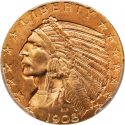
-
1908-S Indian Gold Half Eagle Value
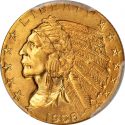
-
1909 Indian Gold Half Eagle Value
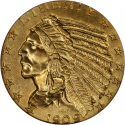
-
1909-D Indian Gold Half Eagle Value
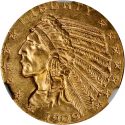
-
1909-O Indian Gold Half Eagle Value
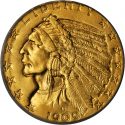
-
1909-S Indian Gold Half Eagle Value
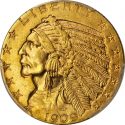
-
1910 Indian Gold Half Eagle Value
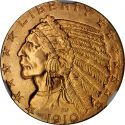
-
1910-D Indian Gold Half Eagle Value
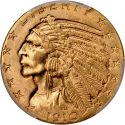
-
1910-S Indian Gold Half Eagle Value
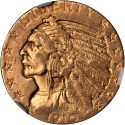
-
1911 Indian Gold Half Eagle Value

-
1911-D Indian Gold Half Eagle Value
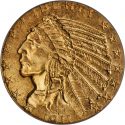
-
1911-S Indian Gold Half Eagle Value
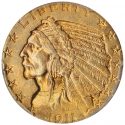
-
1912 Indian Gold Half Eagle Value
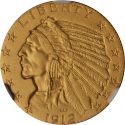
-
1912-S Indian Gold Half Eagle Value
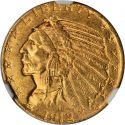
-
1913 Indian Gold Half Eagle Value
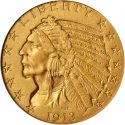
-
1913-S Indian Gold Half Eagle Value

-
1914 Indian Gold Half Eagle Value
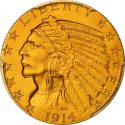
-
1914-D Indian Gold Half Eagle Value

-
1914-S Indian Gold Half Eagle Value
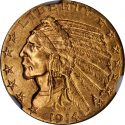
-
1915 Indian Gold Half Eagle Value
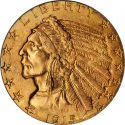
-
1915-S Indian Gold Half Eagle Value

-
1916-S Indian Gold Half Eagle Value
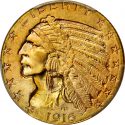
-
1929 Indian Gold Half Eagle Value





